As growers and agronomists are doing battle with fall armyworm (FAW; Spodoptera frugiperda) in maize and sorghum, another species of Spodoptera, the cluster caterpillar (Spodoptera litura; Figure 1) is causing substantial defoliation in summer pulses. We have received reports across Queensland of damaging infestations of cluster caterpillars from soybeans, mungbeans, and peanuts. A cluster caterpillar outbreak of this intensity has not been observed in southern Queensland in recent memory and little is known about effectively managing this pest. This article aims to summarise the available information.
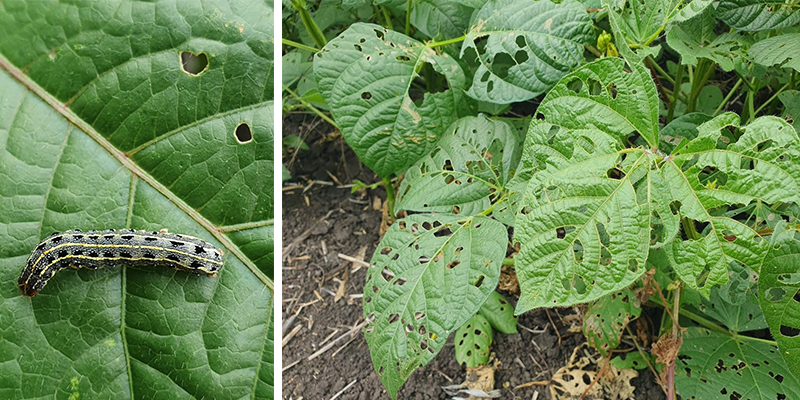
Figure 1: Cluster caterpillar and defoliation damage in mungbean
Identifying the larvae
Cluster caterpillar larvae are easily confused with FAW or even Helicoverpa sp., particularly as all these caterpillar species can be highly variable in appearance (Figure 2). Cluster caterpillar larvae are very smooth with a tapered head and crescent shapes along the body, and older instar larvae are large and almost swollen-looking. Their patterns and colouration can vary with larval instar and food source.
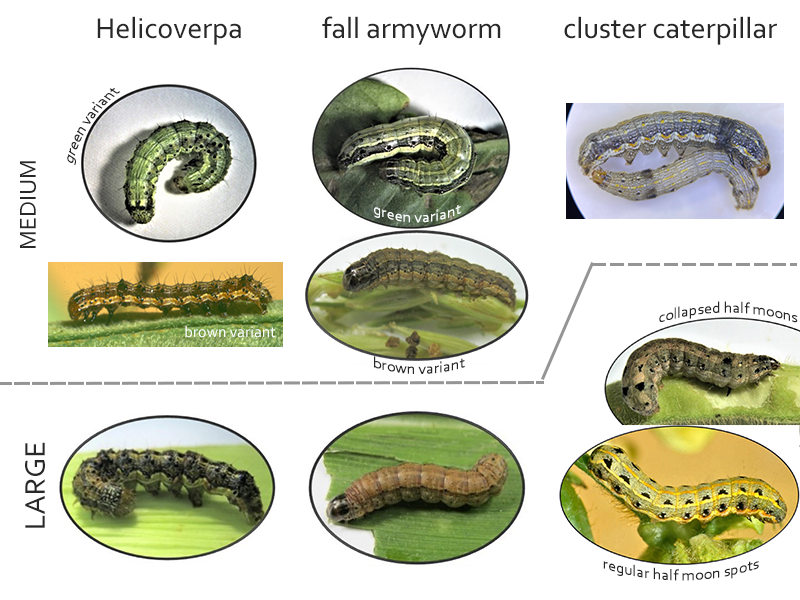
Figure 2: Examples of cluster caterpillar, FAW, and helicoverpa larvae.
For more information on identifying cluster caterpillar, FAW, and Helicoverpa see the Beatsheet article on larval infestations of peanuts
Basic biology and feeding damage
Cluster caterpillar moths lay egg masses typically on the underside of leaves. These masses are covered in a layer of scales and are very difficult to distinguish from FAW egg masses. Young cluster caterpillars hatch and feed on leaves, often remaining close together and creating a ‘windowing’ damage effect (Figure 3). As larvae grow, they spread out, chewing medium to large-sized holes in leaves.
Figure 3: Severe windowing damage caused by small cluster caterpillars
We have recently (16/2/24) observed cluster caterpillars feeding on mungbean buds and flowers, along with vegetative growing tips, in a mungbean paddock on the Darling Downs (Figure 4). Flower and pod-feeding by cluster caterpillar has been observed previously in mungbeans and soybeans, where they have also been recorded feeding on large filling pods. We suspect larvae don’t prefer reproductive plant structures, but instead move to feeding on them as plants develop and leaves become unpalatable. Given the large cluster caterpillar populations being observed this season, agronomists should be prepared for the risk of cluster caterpillars feeding on flowers and pods as crops reach their reproductive stages.
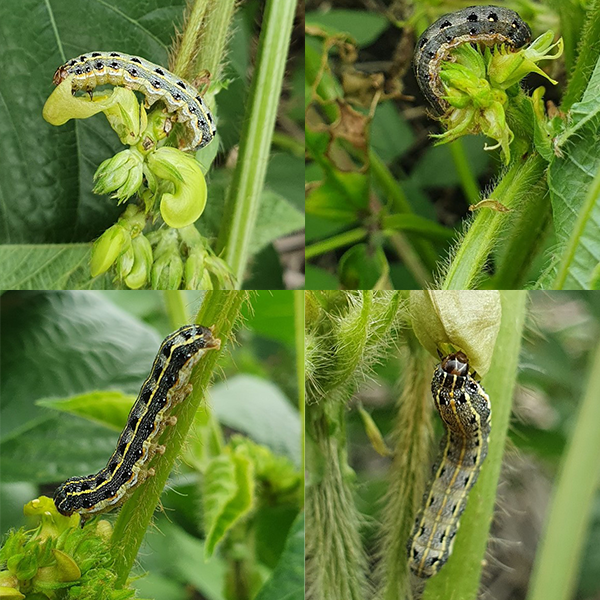
Figure 4: Cluster caterpillars feeding on mungbean buds and flowers.
Economic thresholds
As with most sporadic pests, the economic threshold available for cluster caterpillar in summer pulses is a ‘best guess’. Similarly, as agronomists familiar with FAW can attest, decision making for defoliating pests requires a large amount of guesswork until empirical thresholds are developed. For the current cluster caterpillar infestations, agronomists will have to make control decisions based on their own experience, the crop growing environment, expected economic margins, and the risk appetite of the grower.
The typical thresholds presented for cluster caterpillars in summer pulses are 33% defoliation in pre-flowering crops and 15-20% defoliation for crops in flowering-podding stages. These numbers are approximate and based on research conducted in soybean crops in the U.S. Visual assessment is the usual method by which defoliation is measured (Figure 5).
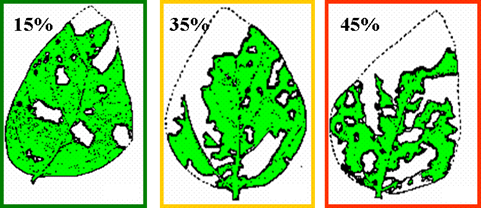
Figure 5: Different levels of defoliation on a single leaflet, ranging from 15-45%.
When making decisions, take into consideration that small larvae do not consume much leaf material; it is larger S. litura larvae that do most of the feeding damage. Therefore, if there is uncertainty around making a spray decision and there are only small larvae present, the opportunity exists to re-check the crop a few days later and see what the pest population is doing – are more eggs being laid and more small larvae coming through? Or was it only a single egg lay and the population is declining? Are natural enemies present and regulating the caterpillar population?
Figure 6 provides data on the leaf consumption rates of cluster caterpillars throughout larval development, in comparison with other summer pulse caterpillar pests.
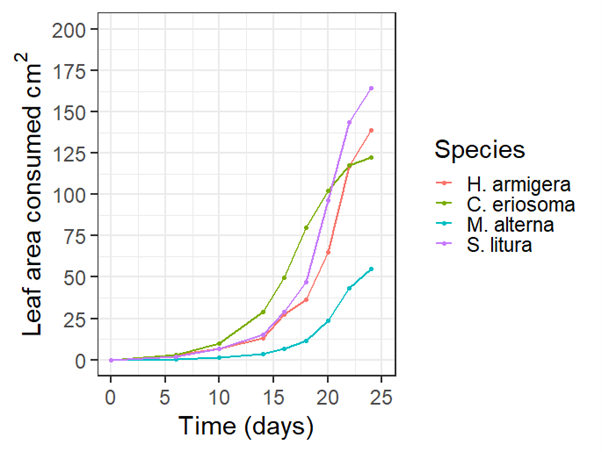
Figure 6: Average leaf area consumption throughout larval development of several summer pulse leaf-feeding caterpillar species (Cluster caterpillar – S. litura, Heliothis – Helicoverpa armigera, Vegetable looper – Chrysodeixis eriosoma, and Bean looper – Mocis alterna).
A ‘wait and re-check’ approach may be particularly useful if the crop is still vegetative, as this may mean a cluster caterpillar spray can occur in conjunction with the first helicoverpa or mirid spray. However, in some locations (particularly coastal and central/northern Queensland) cluster caterpillar pressure has been so severe that action must be taken before budding.
It is very important to consider overall crop health when making control decisions for defoliating pests – smaller plants will reach percent defoliation thresholds at much lower caterpillar populations than larger plants. Similarly, a large healthy irrigated crop will compensate for defoliation much better than a small dryland crop.
NOTE: If cluster caterpillar infestations are observed feeding on growing tips, flowers, or pods, infestations should be managed like helicoverpa. Even though cluster caterpillar is typically a defoliating pest, our recent observations indicate they have the potential to cause significant yield loss. It is worth noting that our flower-feeding observations occurred in a crop that was under the percentage defoliation threshold levels.
Spray options
Most insecticides targeting helicoverpa will also control cluster caterpillar, however, only a few products are registered or available under permit for cluster caterpillar control (see Table 1). Always refer to labels or permits for rates and application instructions.
Table 1: Permits or registrations for cluster caterpillar control in summer legume crops
| Crop | Product | Active | Notes (WHP = withholding period) |
| Peanuts Permit (PER90481) |
Altacor/Vantacor | Chlorantraniliprole | WHP: 14 days |
| Mungbeans | Skope | Acetamiprid + Emamectin | WHP: 4 weeks |
| Soybeans | Skope | Acetamiprid + Emamectin | WHP: 6 weeks |
| All | Dipel | Bacillus thuringiensis | Only efficacious for small larvae |
For more information contact Trevor Volp on 0429 641 912.
Article by Trevor Volp & Melina Miles

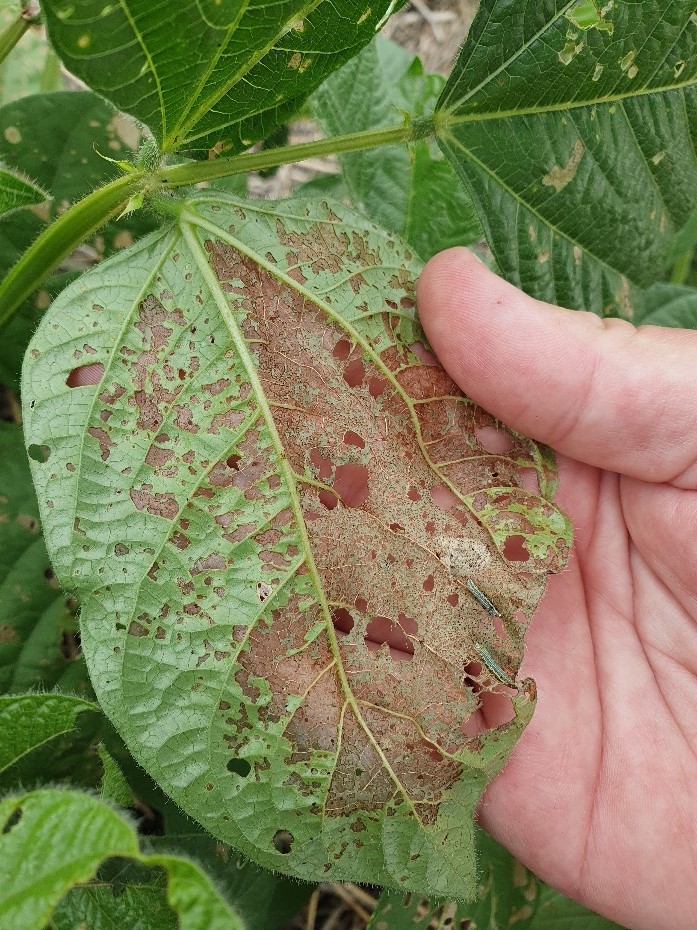
Very timely and appreciated. Thanks.